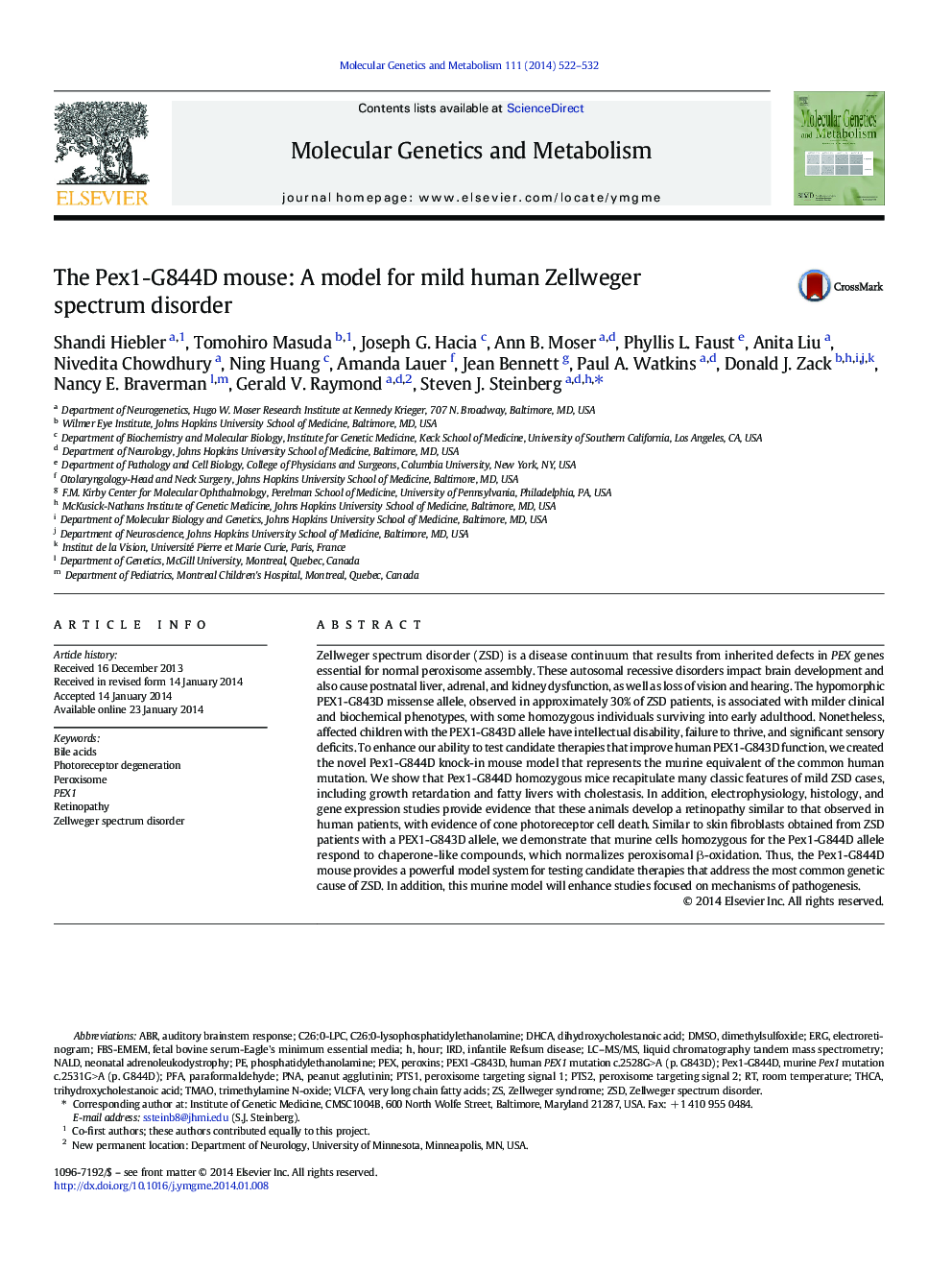| Article ID | Journal | Published Year | Pages | File Type |
|---|---|---|---|---|
| 10833638 | Molecular Genetics and Metabolism | 2014 | 11 Pages |
Abstract
Zellweger spectrum disorder (ZSD) is a disease continuum that results from inherited defects in PEX genes essential for normal peroxisome assembly. These autosomal recessive disorders impact brain development and also cause postnatal liver, adrenal, and kidney dysfunction, as well as loss of vision and hearing. The hypomorphic PEX1-G843D missense allele, observed in approximately 30% of ZSD patients, is associated with milder clinical and biochemical phenotypes, with some homozygous individuals surviving into early adulthood. Nonetheless, affected children with the PEX1-G843D allele have intellectual disability, failure to thrive, and significant sensory deficits. To enhance our ability to test candidate therapies that improve human PEX1-G843D function, we created the novel Pex1-G844D knock-in mouse model that represents the murine equivalent of the common human mutation. We show that Pex1-G844D homozygous mice recapitulate many classic features of mild ZSD cases, including growth retardation and fatty livers with cholestasis. In addition, electrophysiology, histology, and gene expression studies provide evidence that these animals develop a retinopathy similar to that observed in human patients, with evidence of cone photoreceptor cell death. Similar to skin fibroblasts obtained from ZSD patients with a PEX1-G843D allele, we demonstrate that murine cells homozygous for the Pex1-G844D allele respond to chaperone-like compounds, which normalizes peroxisomal β-oxidation. Thus, the Pex1-G844D mouse provides a powerful model system for testing candidate therapies that address the most common genetic cause of ZSD. In addition, this murine model will enhance studies focused on mechanisms of pathogenesis.
Keywords
PTS1ERGPNAPtS2PEXPFAABRIRDDHCADMSOLC–MS/MSNeonatal adrenoleukodystrophypeanut agglutinindihydroxycholestanoic acidelectroretinogramInfantile Refsum diseaseDimethylsulfoxideHourphosphatidylethanolamineNALDparaformaldehydeauditory brainstem responsePeroxinsliquid chromatography tandem mass spectrometry
Related Topics
Life Sciences
Biochemistry, Genetics and Molecular Biology
Biochemistry
Authors
Shandi Hiebler, Tomohiro Masuda, Joseph G. Hacia, Ann B. Moser, Phyllis L. Faust, Anita Liu, Nivedita Chowdhury, Ning Huang, Amanda Lauer, Jean Bennett, Paul A. Watkins, Donald J. Zack, Nancy E. Braverman, Gerald V. Raymond, Steven J. Steinberg,
